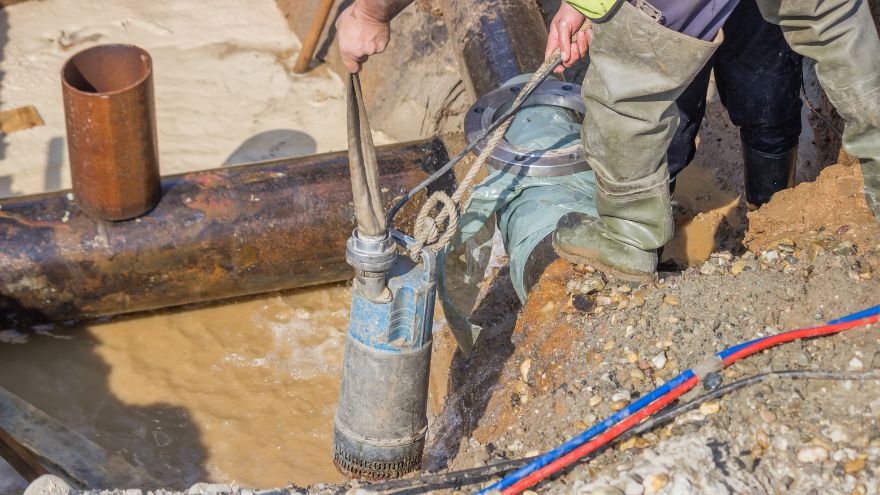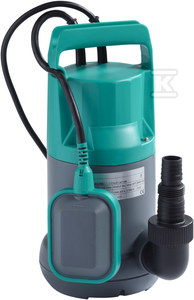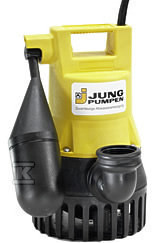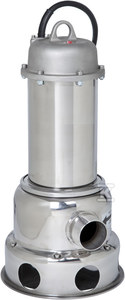A submersible septic tank pump is an extremely important device that must meet high standards and requirements. The main purpose of this pump is to effectively remove and pump waste from the septic tank to the sewage system or other place. What do you need to know about these devices?

Check submersible pumps at the Onninen wholesaler
Submersible and submersible pump – what is the difference?
 The terms " submersible pumps " and "submersible pumps" are often used interchangeably and refer to the same type of equipment. Both terms refer to pumps that are placed to pump in or out fluids.
The terms " submersible pumps " and "submersible pumps" are often used interchangeably and refer to the same type of equipment. Both terms refer to pumps that are placed to pump in or out fluids.
However, in some contexts there may be a noticeable difference between them. "Submersible pump" is a general term referring to a pump that is completely submerged in a fluid, such as water. These types of pumps are usually equipped with a float or other safety devices to protect them from running dry or overloading.
In turn, the term "submersible pump" may be more precise and refer to a device intended for a specific application - e.g. deep wells or swimming pools. Individual models from this group differ, among others: in terms of parameters such as lifting height, efficiency or ability to work in special conditions, e.g. with water with a high content of solid particles.
In practice, however, these terms are often used interchangeably and it is difficult to determine a specific difference between them.
How does a submersible pump work?
Submersible pumps are devices used for  pumping or pumping out water from various places. They are used, for example, in swimming pools, ponds and flooded buildings. Their operation is based on the principle of submerging the pump in water. Therefore, each pump element must be tightly sealed to avoid short circuits during operation.
pumping or pumping out water from various places. They are used, for example, in swimming pools, ponds and flooded buildings. Their operation is based on the principle of submerging the pump in water. Therefore, each pump element must be tightly sealed to avoid short circuits during operation.
Another important part is the float. Its task is to control the liquid level and turn off the engine when it is too low. Thanks to this, the pump is protected against dry running and the resulting potential damage.
Submersible pumps are available in various types. The most important way of division is to use a given model. In this respect, we distinguish pumps for clean water and dirty water. The latter group also includes plastic pumps, slurry pumps and septic tank pumps (equipped with a grinder).
How to connect a submersible pump to dirty water
Dirty water pumps are different from waste water pumps  clean water mainly by its ability to handle various types of pollutants. The former are designed for pumping water containing large amounts of contaminants - e.g. sludge, sewage or chemically aggressive liquids. This is possible thanks to more efficient engines and a more durable structure. The efficient operation of the sewage pump depends on correct installation. To avoid problems during its operation, when connecting a submersible pump, proceed in the following sequence of steps:
clean water mainly by its ability to handle various types of pollutants. The former are designed for pumping water containing large amounts of contaminants - e.g. sludge, sewage or chemically aggressive liquids. This is possible thanks to more efficient engines and a more durable structure. The efficient operation of the sewage pump depends on correct installation. To avoid problems during its operation, when connecting a submersible pump, proceed in the following sequence of steps:
- preparation of the necessary assembly elements: primarily a non-return valve, pressure switches, cables and a safety rope;
- screwing the pump into the non-return valve;
- connecting the supply pipe to the pump
- head twist;
- attaching the pump to the septic tank. For this purpose, use a strong safety cable;
- placing the pump in the septic tank;
- connection and configuration of other elements.
Before starting work, carefully read the operating and installation instructions for the submersible pump. The manufacturer's recommendations for safe use and maintenance may vary depending on the model.
Submersible pumps for dirty water at the Onninen wholesaler
In addition to correct installation, the quality of the device is also important for trouble-free operation. The submersible pump for dirty water should also be adapted to the specific nature of the application. That's why it's worth working with good suppliers. In the Onninen store, we not only offer pumps from renowned manufacturers, but also provide professional advice from our employees. Thanks to their tips, you will be able to buy a pump perfectly suited to your needs.